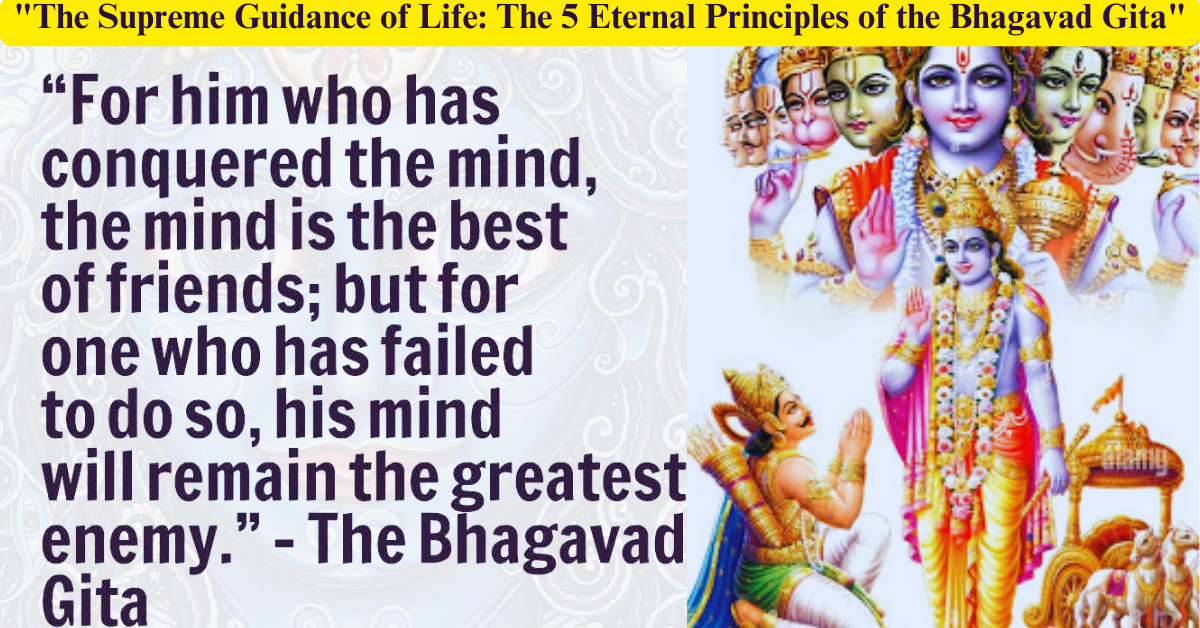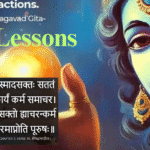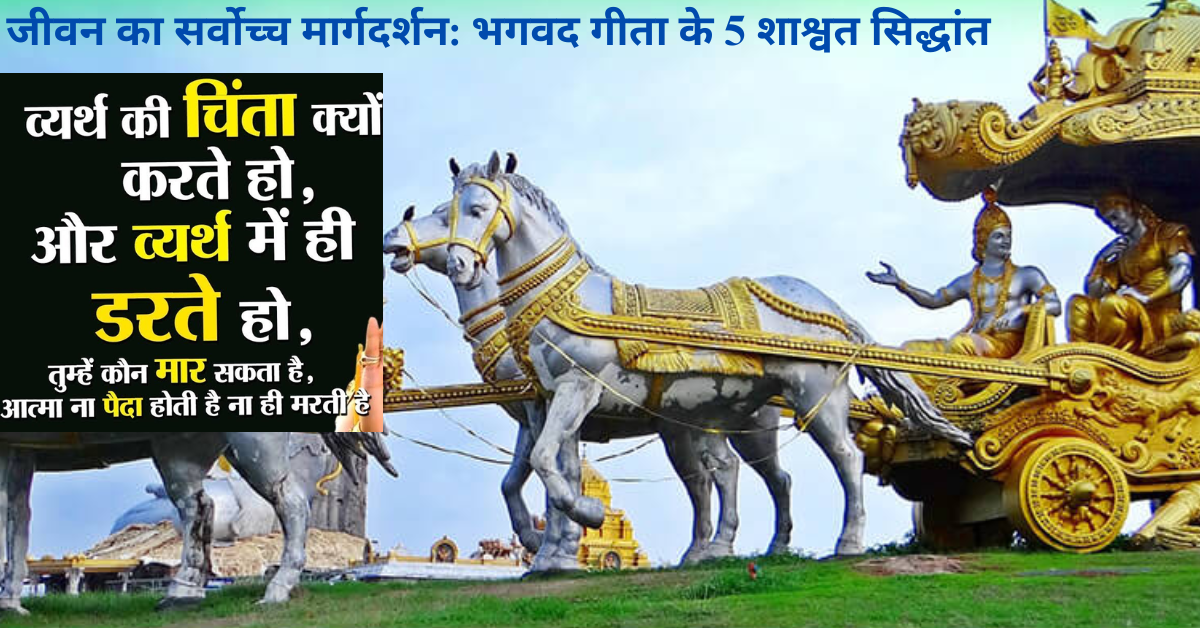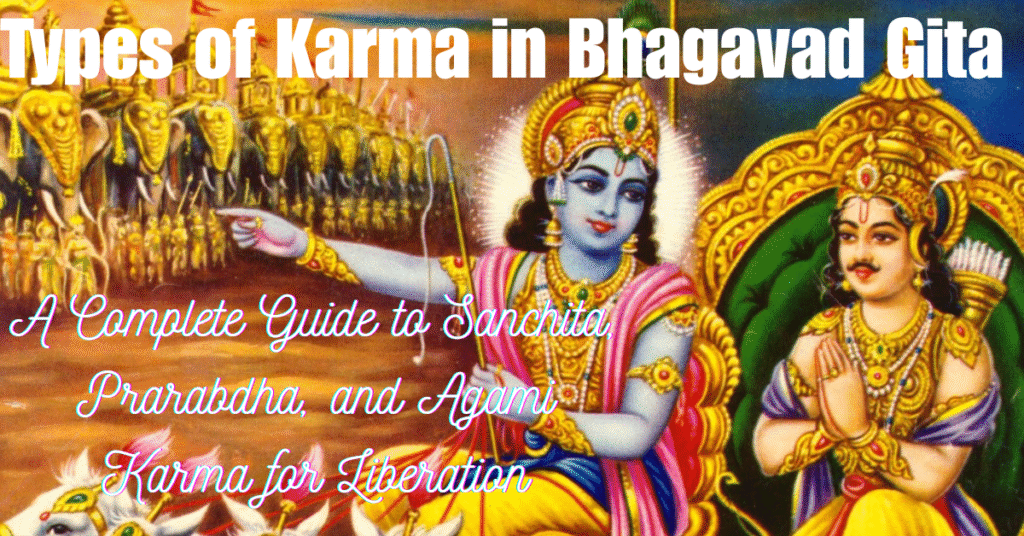
Table of Contents
Types of Karma
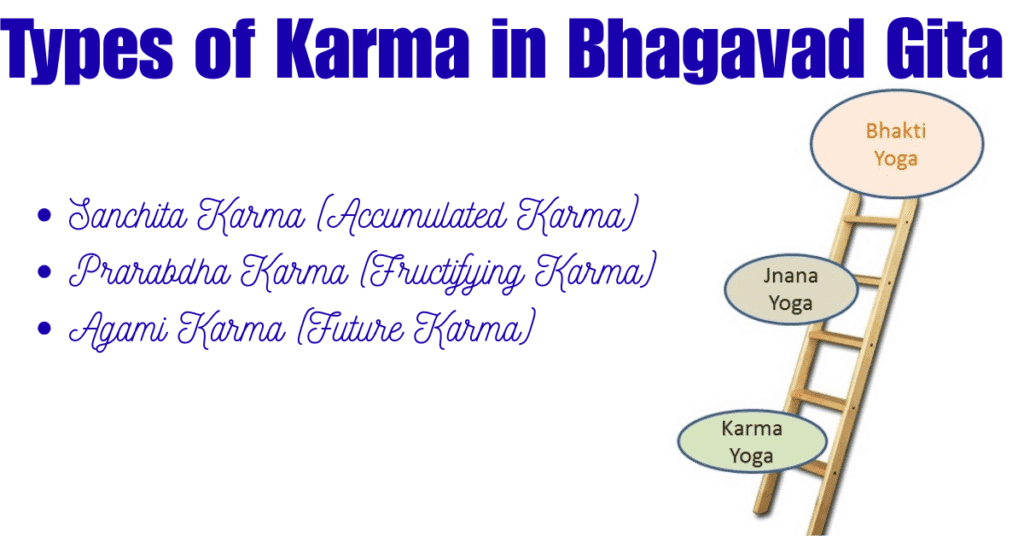
Types of Karma : The Bhagavad Gita, a 700-verse dialogue between Lord Krishna and Arjuna, is more than just a spiritual guide—it is a manual for life. One of its most profound teachings revolves around karma—a Sanskrit word that means “action.” Yet, in the Gita, karma goes far beyond mere physical acts; it encompasses thoughts, intentions, speech, and their cosmic consequences.
According to Vedantic philosophy and the Bhagavad Gita, karma is classified into three main categories:
- Sanchita Karma (Accumulated Karma)
- Prarabdha Karma (Fructifying Karma)
- Agami Karma (Future Karma)
Understanding these types is not only crucial for spiritual seekers but also for anyone looking to break free from the cycles of suffering, confusion, and rebirth.
🌟 1. Sanchita Karma (संचित कर्म): The Reservoir of All Past Actions
🔹 Definition:
Sanchita karma refers to the total accumulated karma from all our previous lives—every action, thought, and desire ever performed. It is like a cosmic database that holds the karmic seeds which haven’t yet manifested into life events.
🔹 Characteristics:
- Timeless: Contains karma from innumerable past births.
- Dormant: It does not affect the current life unless selected as Prarabdha.
- Stored in the subconscious or causal body (karana sharira).
🔹 How it Works:
Only a portion of sanchita karma is activated in any given lifetime (becoming Prarabdha). The rest remains dormant until a future incarnation.
🔹 Gita’s Insight:
While sanchita karma cannot be erased through ordinary action, it can be burnt through self-realization and devotion (Bhakti Yoga). Lord Krishna teaches in Chapter 4, Verse 37:
“As fire reduces wood to ashes, the fire of knowledge burns to ashes all karma.”
🌟 2. Prarabdha Karma (प्रारब्ध कर्म): The Karma You Must Face Now
🔹 Definition:
Prarabdha karma is the portion of sanchita karma that is ripe to be experienced in this lifetime. It determines the basic framework of life—birthplace, body, family, lifespan, and key events.
🔹 Characteristics:
- Active: Already begun to bear fruit; it must be lived out.
- Unavoidable: Even saints and sages must endure it.
- Defines destiny: Birth circumstances and major life episodes.
🔹 Examples:
- Being born in a specific country or family.
- Experiencing chronic illness or sudden fortune.
- Facing unchangeable life events like death or accidents.
🔹 Gita’s Insight:
Krishna advises to accept prarabdha with equanimity and remain unaffected by pleasure or pain (Chapter 2, Verses 14–15). The key lies in developing spiritual detachment (Vairagya) and focusing on the Self (Atman).
🌟 3. Agami Karma (आगामी कर्म): The Karma You’re Creating Now
🔹 Definition:
Agami karma refers to new karma generated by your current choices, thoughts, and actions. This karma is not part of your past—it is being created right now, and it determines your future experiences.
🔹 Characteristics:
- Optional: Depends on how you live now.
- Future-focused: Adds to your karmic account for upcoming lives.
- Controllable: You can choose actions that create good or bad karma.
🔹 Examples:
- Donating selflessly adds good agami karma.
- Hurting others or acting selfishly adds negative karma.
🔹 Gita’s Insight:
In Chapter 3 (Karma Yoga), Krishna explains that one should perform all duties without attachment to results. This attitude, known as Nishkama Karma, helps in neutralizing agami karma, keeping the soul unstained.
🙏 Liberation Through Karma Yoga: Transcending All Karma
The ultimate goal of understanding karma is not to be perfect, but to achieve liberation (moksha) from the endless cycle of birth, death, and rebirth (samsara).
Krishna teaches the path of Karma Yoga—the discipline of action without attachment. When actions are offered to God, and one acts with purity, discipline, and devotion, karma no longer binds the soul.
As said in Chapter 4, Verse 20:
“Abandoning all attachment to the results of action, ever content, and dependent on nothing at all—though engaged in action, he does nothing at all.”
🧠 Practical Applications of Karma in Daily Life
✅ Live mindfully: Every thought and action has consequences.
✅ Focus on intention: The motive behind an action is as important as the act itself.
✅ Detach from results: You can control action, not the outcome.
✅ Serve selflessly: Seva (service) cleanses ego and helps burn karma.
✅ Embrace spirituality: Bhakti, meditation, and jnana yoga purify karma.
🌈 Why This Teaching is Timeless
Whether you are religious, spiritual, or philosophical, the concept of karma is universal. It explains:
- Why bad things happen to good people
- How you can shape your own destiny
- The moral law governing life and rebirth
The Bhagavad Gita’s explanation of karma is not fatalistic—it is deeply empowering. You may not be able to change your past karma, but you can control what you do now, and that transforms your future.
KarmaInGita #BhagavadGitaWisdom #TypesOfKarma #SanchitaKarma #PrarabdhaKarma #AgamiKarma #KarmaYoga #PathToLiberation #HinduPhilosophy #MokshaThroughKarma #SpiritualAwakening
🔚 Conclusion: Karma Is the Blueprint, Conscious Action Is the Key
The three types of karma—Sanchita, Prarabdha, and Agami—form the invisible architecture of our existence. The Bhagavad Gita’s timeless wisdom provides a clear road map to understand, manage, and transcend karma. With conscious effort, inner discipline, and surrender to the Divine, one can truly liberate the soul from karmic bondage and attain everlasting peace.

